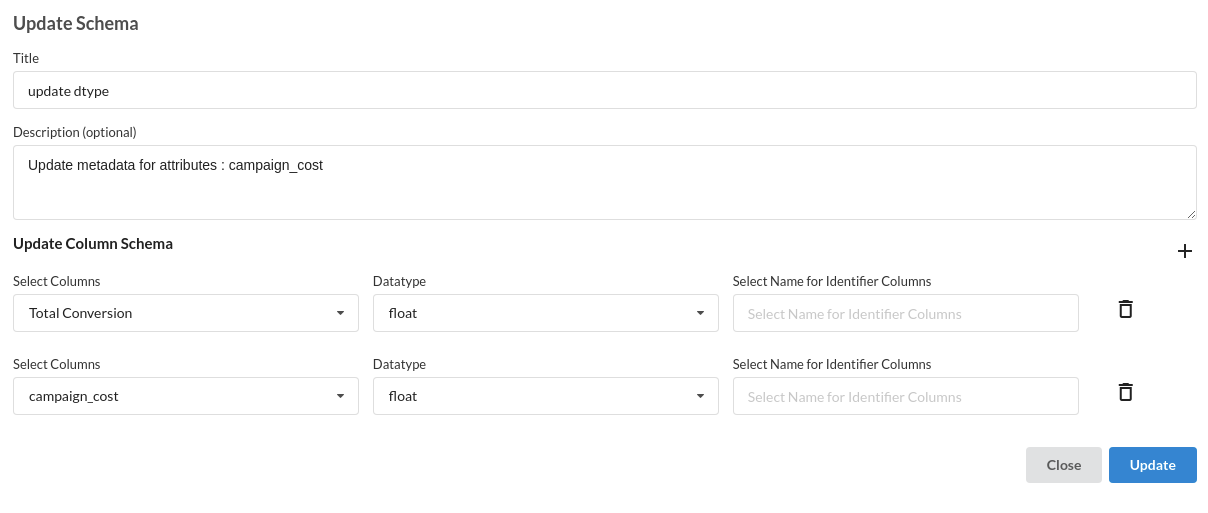Marketing Spend Optimization

Background
Strong marketing analytics are crucial given the complexity of the current multichannel marketing environment. This goes beyond merely gathering information. To interpret data and engage consumers in an effective way, marketers need to have the appropriate procedures, resources, and models in place.Today, it can be difficult to find the ideal balance of these factors because the customer journey covers a number of online and offline platforms, all of which require focused and consistent messaging. Consumers also continue to expect smart marketing that links them to the goods and services they require at the precise moment they require them.Marketers must make sure their marketing spend optimization efforts are founded on correct data in order to satisfy these objectives and generate consistent ROI for the brand. From there, marketers can make effective use of the tools and techniques required to optimize their marketing mix, target the right customers at the right time, and provide the maximum return on investment for their marketing spend.The goal of marketing spend optimization is to pinpoint the channels, points of contact, and tactics that generate the greatest value for a business. From there, marketers can focus their media budgets on these high-value initiatives, resulting in more effective marketing that generates leads for the least amount of money. Given this, marketers who are able to effectively optimize their media spend stand to benefit greatly.But, in order to properly optimize their media spend, marketers need to take into account a number of crucial factors that can ensure their efforts are focused on the appropriate media channels.
Plainly tracking every channel your company uses and making changes in response to the findings is marketing optimization.Little actions accumulate over time, even if the process truly varies based on the type of digital advertising you're conducting and the campaign's main purpose.Over time, your campaigns become more precisely tuned the more you adjust based on the outcomes you're observing.Using the right marketing optimization techniques can contribute to the distinction between making money and wasting money on ineffective advertising.
- Importance of Marketing Optimization
It makes sure your outcomes are as steady and encouraging as possible. Basically, you can scale up once you've figured out what works for your particular niche or market.This implies that with practically every marketing effort you run, you'll be able to observe better response and faster growth over time.Deploying new campaigns that are already largely optimized gets easier the more adept you get at marketing optimization for your company.The ultimate result is the capacity to continuously draw in new leads, clients, and website visitors with the least amount of work and most efficiency.
Objective
This use case helps to track each marketing channel used, understand customer response patterns to various marketing campaigns, and make modifications depending on the findings in order to boost growth and profitability.
Relevance of Xceed Analytics
Xceed Analytics provides a single integrated data and AI platform that reduces friction in bring data and building machine models rapidly. It further empowers everyone including Citizen Data Engineers/Scientist to bring data together and build and delivery data and ml usecases rapidly. It's Low code/No code visual designer and model builder can be leveraged to bridge the gap and expand the availability of key data science and engineering skills.
This usecase showcases how to create,train/test a marketing spend optimization model workflow.The datasets used for this purpose was built by Xceed. Customers,orders and products datasets are used for this purpose .Xceed will provide a NO-CODE environment for the end-to-end implementation of this project, starting with the uploading of datasets from numerous sources to the deployment of the model at the end point. All of these steps are built using Visual Workflow Designer, from analyzing the data to constructing a model and deploying it.
Data Requirements
The dataset that is used here includes :
- Customers dataset : contains customer purchase information .
Columns of interest in the dataset
Model Objective
To track every marketing channel employed, comprehend customer response patterns to different marketing campaigns, and alter strategies based on the results.
Steps followed to develop and deploy the model
- Upload the data to Xceed Analytics and create a dataset
- Create the Workflow for the experiment
- Perform initial exploration of data columns.
- Perform Cleanup and Tranform operations
- Calculate CPA
Upload the data to Xceed Analytcs and Create the dataset
- From the Data Connections Page, upload the the dataset to Xceed Analytics. For more information on Data Connections refer to Data Connections
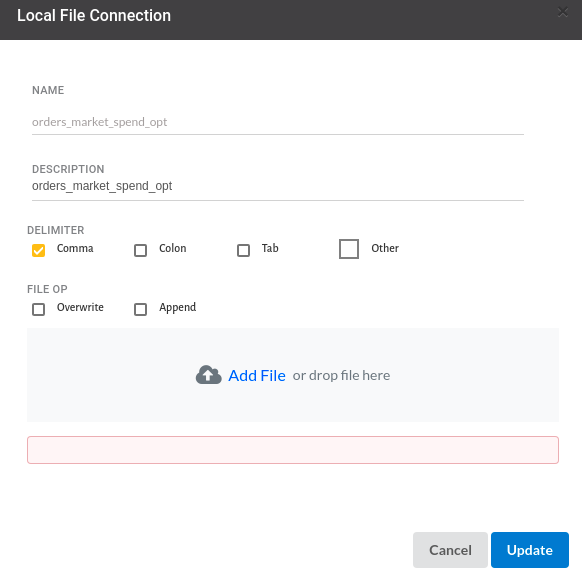
- Create a dataset for each dataset from the uploaded datasource in the data catalogue. Refer to Data Catalogue for more information on how to generate a dataset.

Create the Workflow for the experiment
- Create a Workflow by going to the Workflows Tab in the Navigation.Refer Create Workflow for more information.

You will see entry on the workflow's page listing our workflow once it's been created.

To navigate to the workflow Details Page, double-click on the Workflow List Item and then click Design Workflow. Visit the Workflow Designer Main Page for additional information.
- By clicking on + icon you can add the Input Dataset to the step view. The input step will be added to the Step View.
Perform initial exploration of data columns.
- Examine the output view with Header Profile, paying special attention to the column datatypes. for more information refer to output window
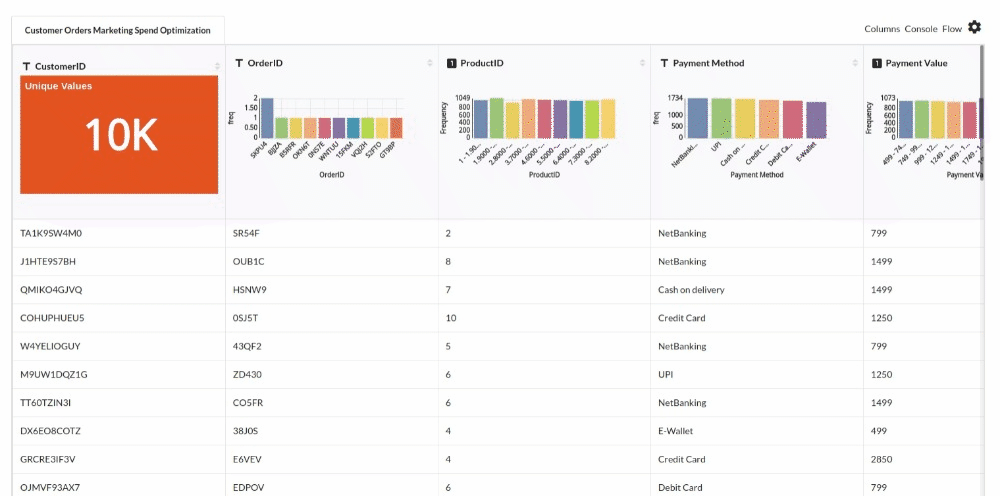
- Column Statistics Tab (Refer to Column Statistics for more details on individual KPI)
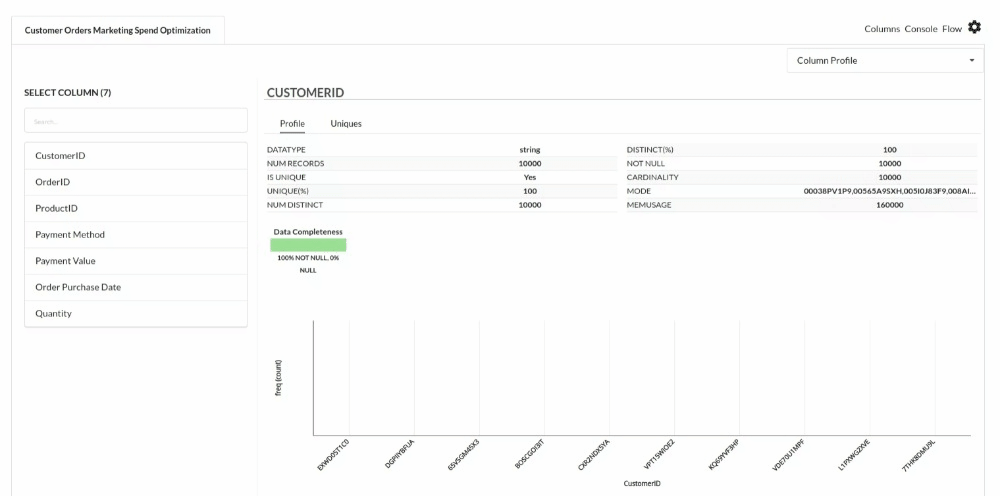
Perform Cleanup and Transform Operations
- Join tables Customers and Orders.
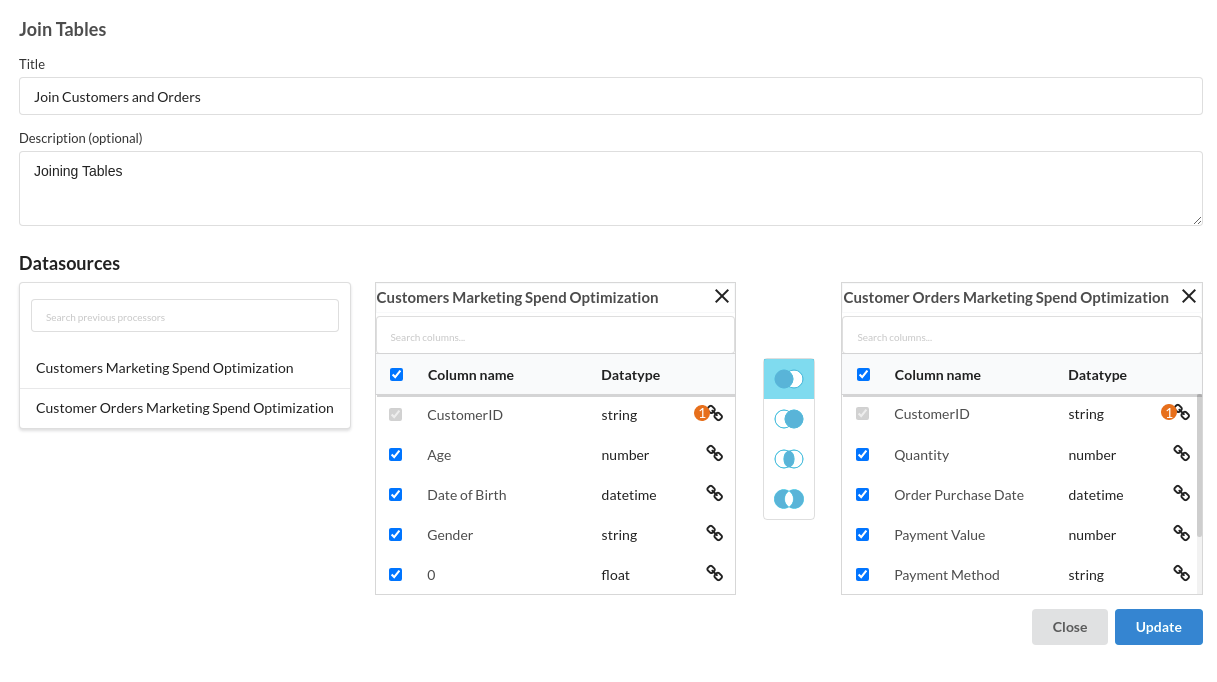
- Join Customer Orders and Acquisition.
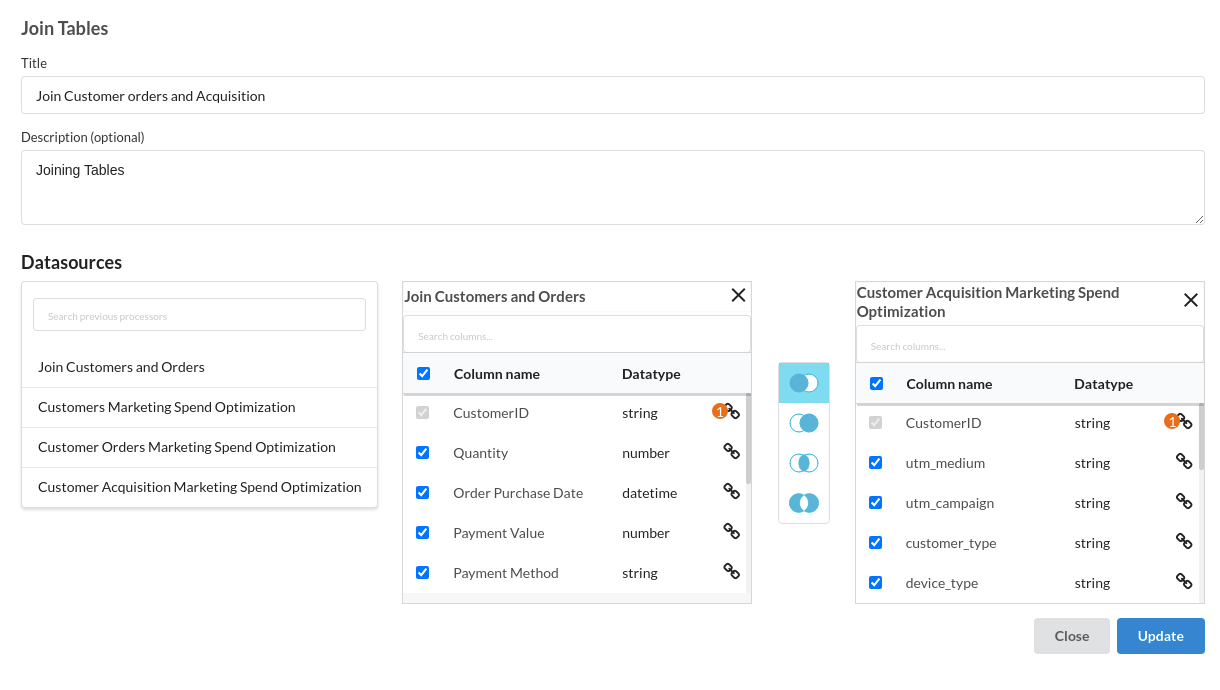
- Conditional Column - home_page

- Conditional Column - page_details_view

- Conditional Column - products_add_to_cart

- Conditional Column - products_checkout

- Conditional Column - successful_transactions

- COnditional Column - Conversion
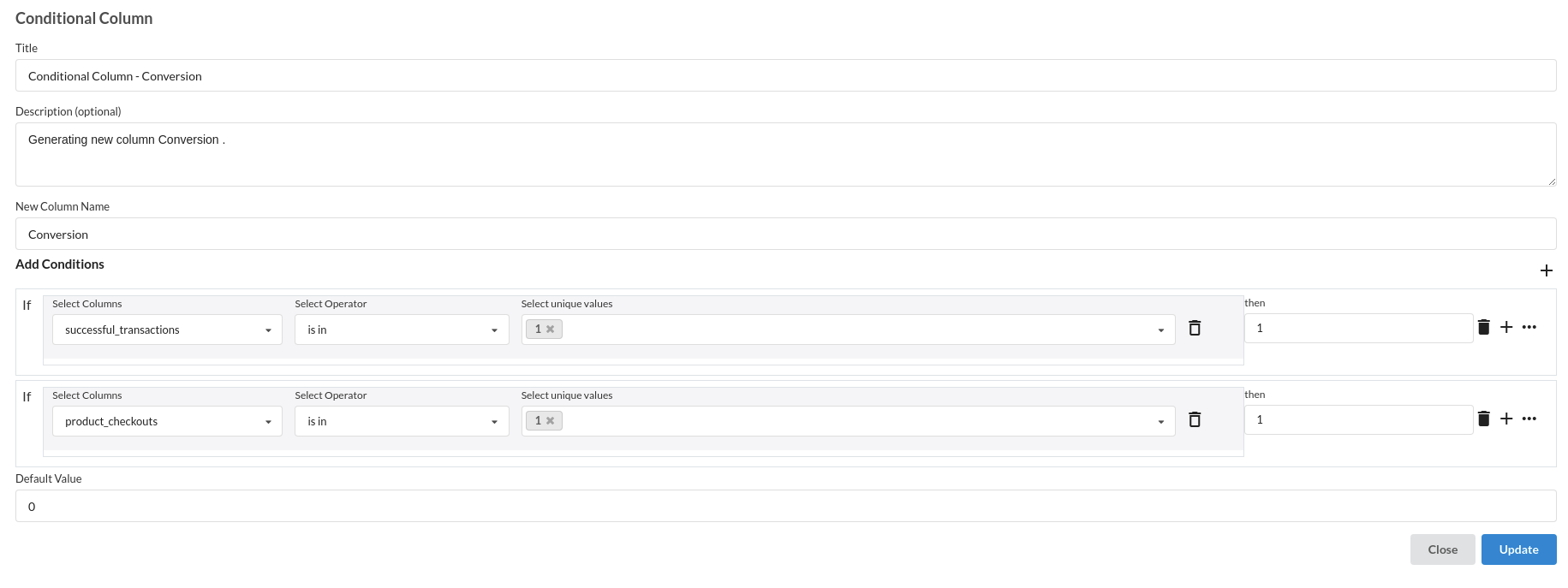
- Calculate Total Conversion
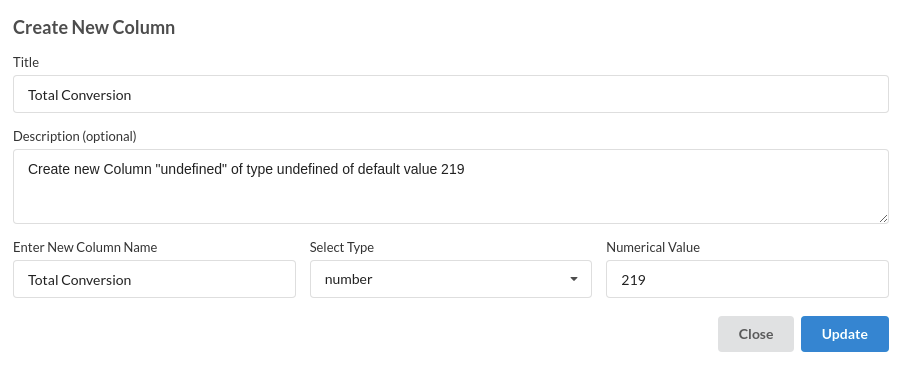
- Conditional Column - campaign_cost
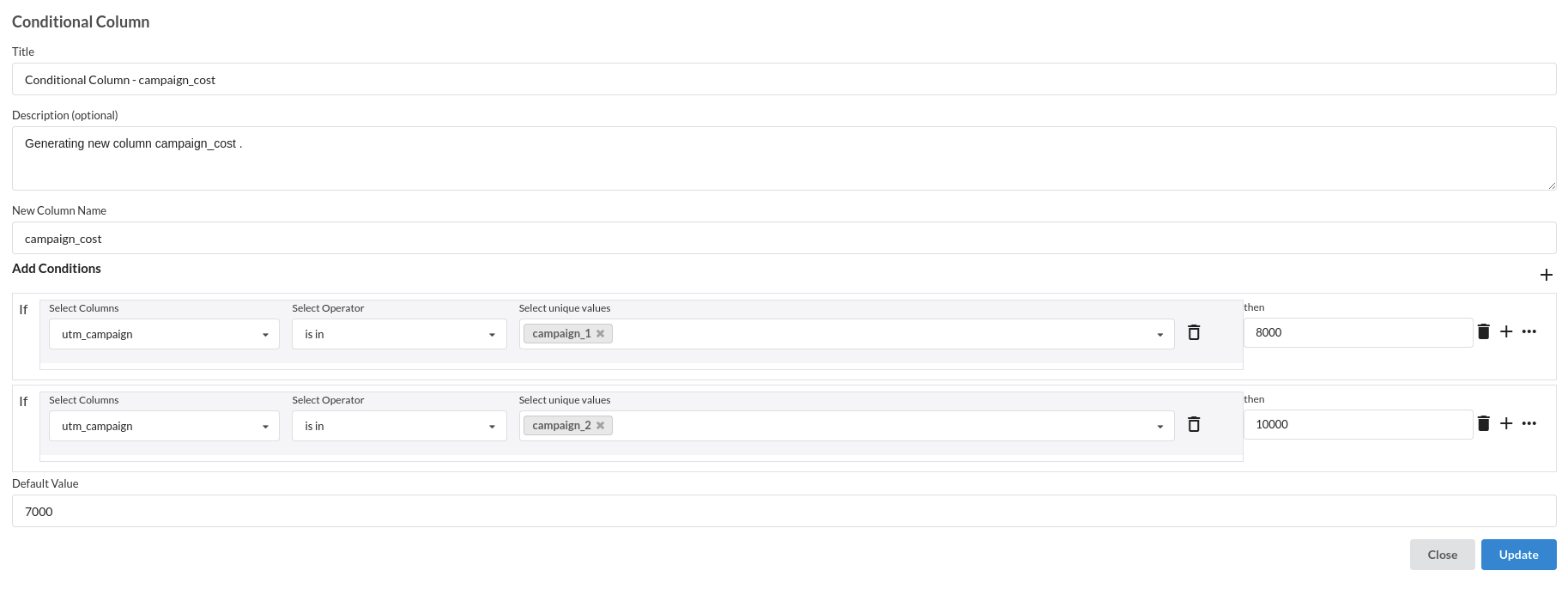
- Update datatypes
